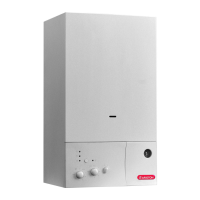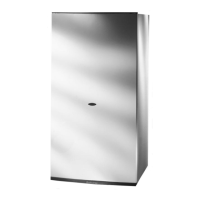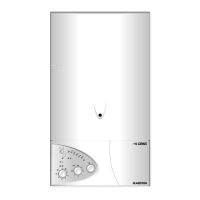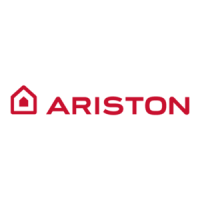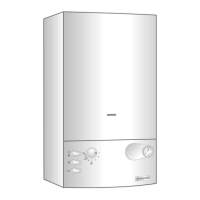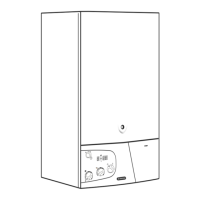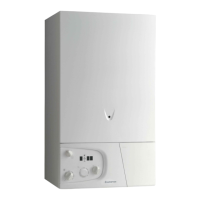24
DRAINING THE HEATING SYSTEM
The heating system must be drained as follows:
- Turn off the boiler;
- Attach a hose pipe and open the drain valve;
- Drain the system at the lowest points (where present). When the heating
system is unused for an extended period of time, it is recommended that you
add antifreeze with an ethylene glycol base to the water in the heating pipe
work and radiators if the ambient temperature drops below 0°C during the
winter.
This makes repeated draining of the entire system unnecessary.
DRAINING THE DOMESTIC HOT WATER SYSTEM
Whenever there is the danger of the temperature dropping below the
freezing point, the domestic hot water system must be drained as follows:
- Turn off the general water valve for the household plumbing system;
- Turn on all the hot and cold water taps;
- Empty the remaining water from the lowest points in the system (where
present).
3.7 DRAINING THE SYSTEM
- the boiler is powered electrically;
- the gas is turned on.
6 - EXHAUST DISCHARGE ANOMALY SHUTDOWN:
The boiler is fitted with safety devices, which in the event of defective
discharge of exhaust products, automatically interrupts the gas supply,
thereby shutting off the boiler.
The shutdown of the boiler is temporary and is indicated by the
illumination of the yellow L.E.D. “H” for a period of about 15 minutes.
Once this time period has passed and the discharge state of exhaust
fumes has returned to normal, the boiler automatically turns back on.
7 - PUMP PROTECTION:
To prevent the pump from seizing the boiler will activate the pump for 20
seconds every 21 hours after it’s last operation.
3.8 COMPLETION
For the Republic of Ireland it is necessary to complete a “Declaration of
Conformity” to indicate compliance to I.S. 813. An example of this is given in the
current edtion of I.S. 813. In addition it is necessary to complete the
Log Book.
3.9 OPERATIONAL CHECKS
1. The flue system must be visibly checked for soundness.
2. On Central Heating allow the system to warm up and manipulate the Central
Heating temperature control knob, check the burner modulates up and down
between the high and low settings.
3. Range rate the thermal power for Central Heating, as detailed in
SECTION 4.2
4. Run the Domestic Hot Water, manipulate the Domestic Hot Water
temperature control knob to check the burner modulates up and down
between the high and low settings.
5. Balance the Central Heating system until all return temperatures are correct
and equal.
6. Turn ON/OFF button OFF, disconnect the pressure Gauge, retighten screw
and relight boiler.
7. Re-examine Central Heating, Domestic Hot Water and Cold Water supplies
for soundness.

